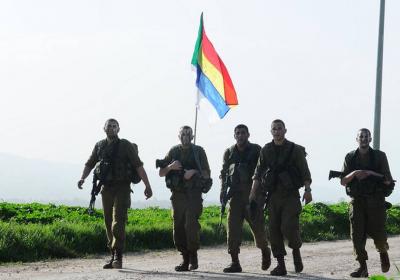The spiritual leader of the Druze community in Syria, Sheikh Hikmat al-Hajri, issued a statement last night (Saturday) strongly condemning the attack on Majdal Shams and urged international institutions to work on punishing those responsible for the killing of children and youths in the missile attack. The statement did not explicitly mention Hezbollah, but it was very strong and unusual, as the incident has put the relationship between Hezbollah and the Druze community in a very difficult situation, despite Hezbollah denying responsibility for the attack. Druze leader Walid Jumblatt also issued a statement condemning the attack, along with Democratic Party leader Talal Arslan and former minister Wiam Wahhab commenting on the incident.
#### The relationship with Hezbollah
Hezbollah's relationship with the Druze community in Syria and Lebanon is strong and has significant importance for them, as Hezbollah operates in regions inhabited by the Druze community in Syria. This relationship has experienced many bumps, with both parties engaging militarily, politically, and even doctrinally in Lebanon and Syria. Like all sects, the Druze are divided between supporters and opponents of Hezbollah in Lebanon and Syria. In Israel, Druze actively participate in the Israeli army.
#### Druze in the Israeli Army
Hassan Rabah, the security head of the Druze village of Hurfeish, which has a population of about seven thousand, states that approximately "80% of the men work in national defense," meaning in the army, police, intelligence, or prisons. While the Israeli army is engaged in combat with Hamas in Gaza, located two hundred kilometers to the south of their village, the residents of Hurfeish focus on securing Israel's northern borders, which regularly experience crossfire with Lebanese Hezbollah.
Rabah, who heads a self-defense group formed after the Hamas attack, explained, "We are very close to the Lebanese border, just four kilometers away, and there is no fence in our village, so two vehicles patrol continuously." Members of the twenty-person group traverse the winding roads of the village amid the sounds of Israeli shelling regularly targeting southern Lebanon. A military battalion, comprising 70% Druze members, is stationed in the area.
#### Brothers in Arms
The Druze have lived for centuries in this mountainous area located at the tripoint between three countries officially at war: Israel, Lebanon, and Syria. Political officer in Hurfeish, Mufeed Mar’i, stated, “Every Druze is connected to the land they live on; it’s a bond that cannot be severed.” The Druze community, numbering 149,000, constitutes two percent of Israel’s total population. Under their special status as “brothers in arms,” they are the only Arabs in Israel who perform compulsory military service. An increasing number have held high civilian, military, and political positions, despite their ongoing complaints of discrimination.
Mufeed Mar’i displayed a large portrait in his living room of his brother, Colonel Nabil Mar’i, killed in Gaza in 1996, becoming a "hero" in the village, especially after he sent a letter to the then Israeli Defense Minister at the age of eighteen, requesting to join the paratroopers unit in the army. Mufeed Mar’i remarked, “He paved the way for all of us; since then, we have had a range of opportunities.”
#### "Model" Druze
A military official, speaking to AFP on the condition of anonymity, stated that the Druze display a "model" of bravery in combat, making them a strong presence in elite units. Mar’i noted that more than "forty members of the Druze community" have been killed in recent weeks, mostly while countering the Hamas attack on October 7, indicating that the highest-ranking Israeli officer killed in Gaza was Druze.
Approximately 1,200 fatalities have occurred in Israel, mostly civilians who died on the first day of the Hamas attack, according to authorities, while 11,078 Palestinians have been killed, including over 4,506 children, in Israeli bombings on Gaza, according to the latest toll released by the Hamas health ministry.
This week, the nearby village of Yanooh-Jatt held a ceremony to honor Officer Alim Saad, the brother of Kamal, who was killed on October 9 during clashes with militants at the northern border. His brother recounted, “He evacuated his soldiers and returned alone; four of the five terrorists were killed, and he died from his injuries. He sacrificed himself so they wouldn’t do to us what they did in the south.”
Since October 8, northern Israel has witnessed daily exchanges of fire between Israel and Hezbollah, alongside Palestinian factions operating in southern Lebanon.
#### Druze Participation in the Army
The percentage of Druze serving in the Israeli army is 85%, exceeding the participation rate of Jews in the army. Druze soldiers serve in various roles within the occupying Israeli army, including combat, support, intelligence, medical corps, military colleges, technology, and logistics. Today, approximately 143,000 Druze live in Israel, making up 1.6% of the population and 7.6% of the Arab population, distributed across several regions, particularly the Galilee, Carmel, and Golan Heights. Many have held positions in the Knesset and occupied government, ministerial, and diplomatic roles in Israeli governments.




